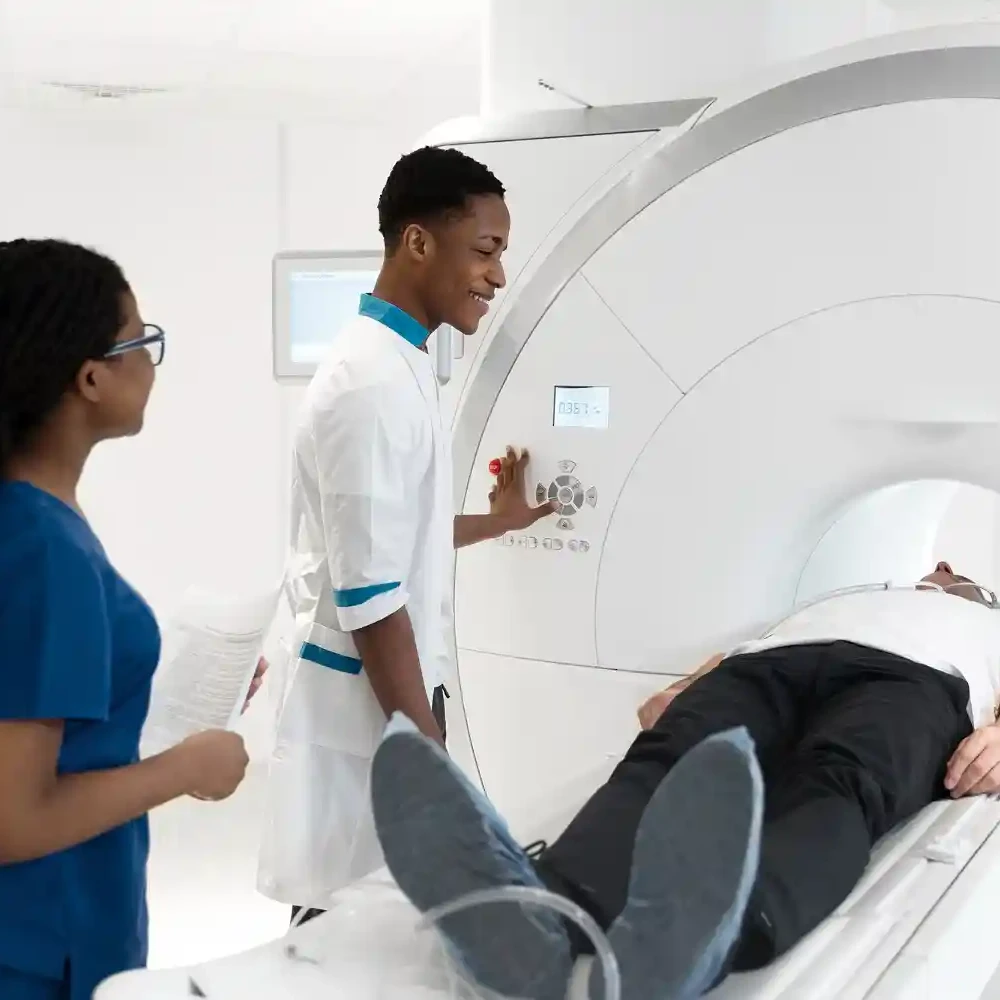An electroencephalogram (EEG) is a test that records electrical activity in your brain.
From the name Electro{electrical} Encephalon (brain).
This EEG detects electrical activity in the brain using small electrodes in the form of metals that are attached to the scalp.
This picks up signals in the form of electrical impulses from the brain cells, which are active all the time, even when asleep.
Most EEGs are recommended by a neurologist or a doctor to diagnose and monitor brain activity and disorders such as seizures, epilepsy, autism, dementia, and some other neurodegenerative disorders.
EEGs can also identify the causes of other problems, such as sleep disorders and behavioral changes.
They are sometimes used to evaluate brain activity after a severe head injury.
EEG cannot be used to detect disorders such as schizophrenia or bipolar disorder.
What to do or not do before the test
- You are advised not to eat or drink anything containing caffeine for at least eight hours before the test (because caffeine can affect your sleeping activity).
- Your doctor may also ask you to sleep as little as possible the night before the test if you are recommended for sleep EEG.
- You may also be given a sedative (melatonin) to help you relax and sleep before the test begins. Most times, melatonin is administered to a patient who is recommended for sleep EEG and to uncooperative children about 1 hour before the test Note that melatonin does not interfere with the EEG activity. However, 3mg of melatonin is recommended for less than 15 kg, 6 mg for more than 15 kg, and 10mg for a normal, healthy adult.
- Do not put any hair conditioner or oil on your hair before the test. If hair oil remnants are left on your scalp, the EEG tech will rub a cleanser on the places where the electrodes will be attached before putting them in.
How is the test done?
You will be asked to lie on the bed or a relaxing chair.
About 20 small electrodes will be attached to your head with washable gel (this gel will aid the flow of electrical transmission)
The technician may ask you to do several things during the test, such as asking you to open and close your eyes, breathe deeply and rapidly (hyperventilation), or look at flashing lights (this is useful for detecting photosensitive epilepsy).
Most of the time, you will just lie still with your eyes closed.
What to do after the test
The technician removes the electrodes.
If you had no sedative, you should feel no side effects after the procedure, and you can return to your normal routine.
If you use a sedative, it will take time for the medication to begin to wear off.
Arrange to have someone drive you home and take a rest for the day.
How long does the test take?
Normally, the EEG test takes about 30 minutes to 1 hour, depending on the recommended test.
What risk is associated with the test?
There’s absolutely no risk from an EEG test.
An EEG is comfortable, and patients do not feel any shocks or pain from the test.
Moreover, EEG is a non-invasive and non-radioactive procedure; therefore, it is safe.
Waves found on EEG
Waves in the EEG can be classified as alpha, beta, theta, and delta waves
1. Alpha waves
They are rhythmical waves that occur at frequencies between 8 and 13 cycles per second and are found in the EEGs of almost all healthy adults when they are awake and in a quiet, resting state of celebration.
These waves occur most intensely in the occipital region but can also be recorded from the parietal and frontal regions of the scalp.
During deep sleep, the alpha waves disappear.
Also, when the awake person’s attention is directed to some specific type of mental activity, the alpha waves are replaced by beta waves.
2. Beta waves
These waves occur when you are awake; it doesn’t matter whether your eyes are closed or open.
Certain drugs, such as sedatives, can influence these waves.
They occur at frequencies greater than 14 cycles/sec and as high as 80 cycles/sec.
They are recorded mainly from the parietal and frontal regions
3. Theta waves
They are slow waves and are normal for all ages during sleep.
They generally aren’t obvious when adults are awake.
They have frequencies between 4 and 7 cycles per second.
They occur normally in the parietal and temporal regions in children, but they also occur during emotional stress in some adults, particularly during disappointment and frustration.
Theta waves also occur in many brain disorders, often in degenerative brain states.
4. Delta waves
They have frequencies of less than 3.5 cycles per second.
They occur in very deep sleep, in infancy, and in people with serious organic brain diseases.
Getting the Results
Since an EEG test can only reveal what’s happening in the brain, it can’t explain why it’s happening.
That requires the expertise of your doctor.
A neurologist or a neurophysiologist (a doctor trained in nervous system disorders) will read and interpret the results.
Though EEGs vary in complexity and duration, results are usually available in 7–10 days.
How to identify an abnormal result
Abnormal EEG signals might show little electrical “explosions,” such as spikes or sharp waves, which are common in epilepsy.
or the signals may have an abnormal frequency, height, or shape pattern.
It can also be a brain wave showing up where it should not.
For example, a delta wave occurring in an awake adult is not normal.
This wave usually occurs in adults when they are in deep sleep.
Normal EEG signals include no such thing as spikes and sharp waves, and they usually have a regular wave pattern.
However, a normal EEG does not mean that you do not have a seizure.
Even someone who has seizures a few days before the test can have a normal EEG result.
This is because the EEG only shows brain activity during the time of the test.
However, based on all of this information, doctors use information from an EEG to gain insight into brain activity.
Your neurologist may diagnose seizures with confidence even though the result of your EEG was normal.
A normal EEG does not mean that your doctor was wrong in saying that you had a seizure.
Perhaps if a medicine is prescribed, keep taking it until the doctor suggests you stop it.
Olamide Fatokun
Olamide Fatokun is a Medical physiologist and a medical writer with over 2 years of experience in various areas of medical diagnostics and volunteering.
Olamide holds a Bachelor of Technology (B.Tech) in Human Physiology from Ladoke Akintola University of Technology Ogbomosho, Oyo State, Nigeria.



